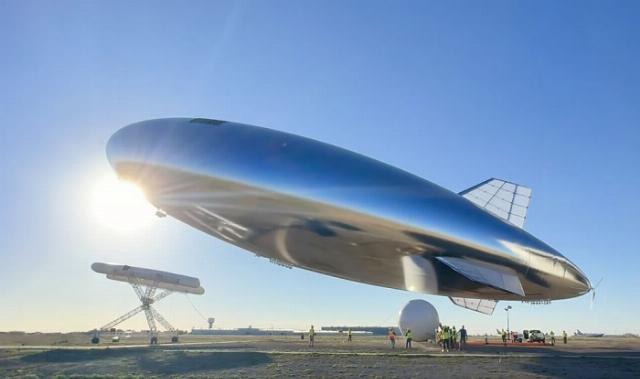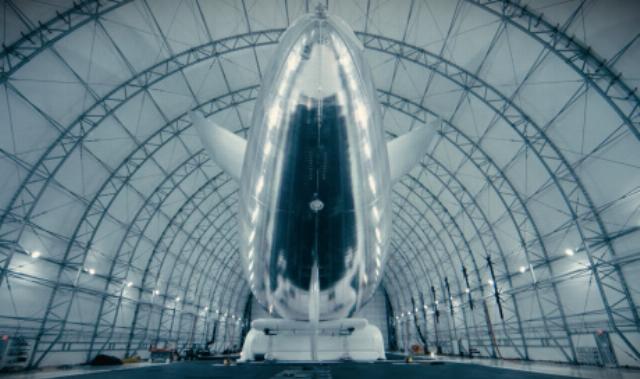
Sceye HAPS Airship
The Sceye HAPS airship has established a new achievement that confirms the prospects of its concept. The aircraft took off at 7:36 on August 15 from the airfield in New Mexico, climbed to an altitude of 18,593 m and landed the next day at 12:21. All maneuvers during the day were carried out at the expense of energy accumulated by the solar panels of the airship, which proves the possibility of its autonomous operation.
The aerospace company Sceye was founded in 2014, the first version of the HAPS airship took off in 2021. This is a 65 m long device, the outer shell of which for the most part consists of solar panels based on selenide and gallium arsenide. The dome of the airship is filled with helium, it is designed for work at altitudes of 18-19 km, where the influence of the wind is minimal. According to the creators of Sceye HAPS, this will be a mobile platform capable of hovering at the right point and working there autonomously for months on end.

Sceye HAPS Airship

Sceye HAPS Airship

Sceye HAPS Airship
Any equipment that requires space coverage from a height can be installed on HAPS. For example, in one experiment, using an active antenna array, it was possible to establish an LTE OpenRAN connection with a smartphone on the ground with a directional beam from a distance of 140 km, with the norm for this technology up to 100 km. A consortium of telecommunications companies in the state of New Mexico plans to use such airships to provide Internet access in the vast territory of the Navajo tribes. The US Environmental Protection Agency is interested in the project, it will be used in a five-year plan to control methane emissions in the region. It is planned to use such devices to monitor the state of the environment, track fires and other natural disasters. The airship has already carried out more than two dozen test flights, and its commercial operation will begin in 2025.
Alexander Martynenko
